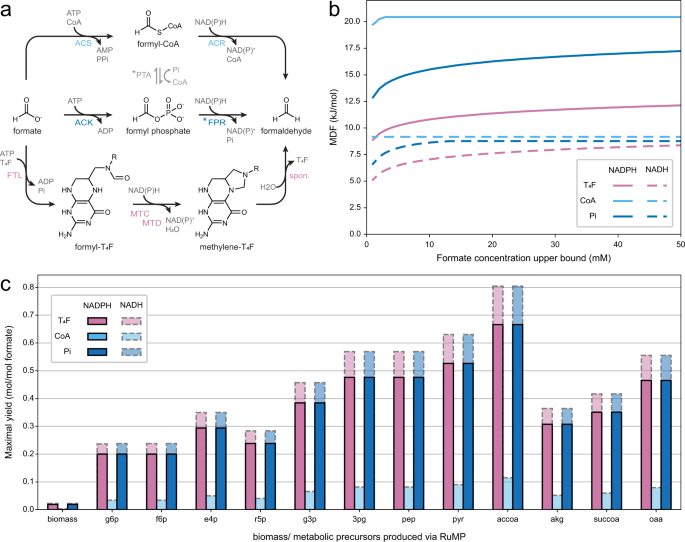二酸化炭素を持続的に利用する新たな方法を開発 Researchers develop a new method for the sustainable use of carbon dioxide
2023-05-12 マックス・プランク研究所
◆新しい研究では、二酸化炭素をギ酸(HCOOH)を介して生化学産業において貴重な物質に変えるプロセスが示されている。ホルムアルデヒド(HCOH)に還元されることで、生体内においてプロセスが起こるようになっている。ホルムアルデヒドは毒性がなく、他の有用な物質に変換できる。
<関連情報>
- https://www.mpg.de/20293586/0512-terr-formic-acid-carbon-dioxide-neutrality-153410-x
- https://www.nature.com/articles/s41467-023-38072-w
リン酸依存的なギ酸からホルムアルデヒドへの変換を現場で速やかに行う新しい自然界のカスケードを工学的に解明 Engineering a new-to-nature cascade for phosphate-dependent formate to formaldehyde conversion in vitro and in vivo
Maren Nattermann,Sebastian Wenk,Pascal Pfister,Hai He,Seung Hwan Lee,Witold Szymanski,Nils Guntermann,Fayin Zhu,Lennart Nickel,Charlotte Wallner,Jan Zarzycki,Nicole Paczia,Nina Gaißert,Giancarlo Franciò,Walter Leitner,Ramon Gonzalez & Tobias J. Erb
Nature Communications Published:09 May 2023
DOI:https://doi.org/10.1038/s41467-023-38072-w

Abstract
Formate can be envisioned at the core of a carbon-neutral bioeconomy, where it is produced from CO2 by (electro-)chemical means and converted into value-added products by enzymatic cascades or engineered microbes. A key step in expanding synthetic formate assimilation is its thermodynamically challenging reduction to formaldehyde. Here, we develop a two-enzyme route in which formate is activated to formyl phosphate and subsequently reduced to formaldehyde. Exploiting the promiscuity of acetate kinase and N-acetyl-γ-glutamyl phosphate reductase, we demonstrate this phosphate (Pi)-based route in vitro and in vivo. We further engineer a formyl phosphate reductase variant with improved formyl phosphate conversion in vivo by suppressing cross-talk with native metabolism and interface the Pi route with a recently developed formaldehyde assimilation pathway to enable C2 compound formation from formate as the sole carbon source in Escherichia coli. The Pi route therefore offers a potent tool in expanding the landscape of synthetic formate assimilation.


